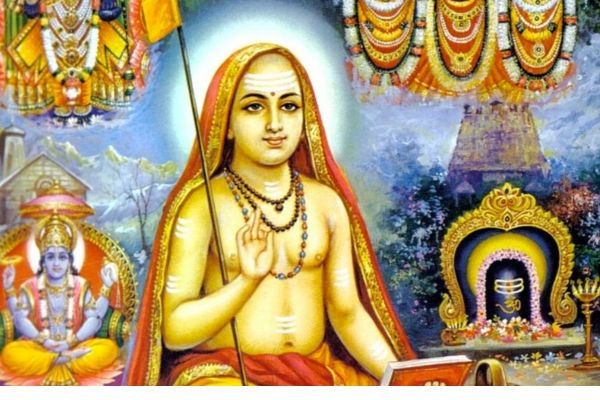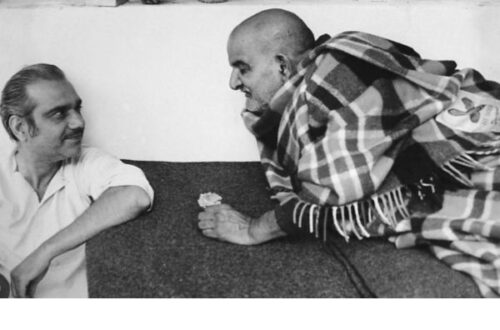
Adi Shankaracharya: The Sage Who Shaped Indian Philosophy
Adi Shankaracharya, born in the 8th century CE in Kalady, Kerala, stands as a monumental figure in Indian philosophy and spirituality. His profound contributions to Advaita Vedanta have left an indelible mark on Hinduism, shaping its doctrines and practices for centuries. This comprehensive exploration delves into his early life, philosophical contributions, major works, establishment of monastic orders, and enduring legacy.
Early Life and Spiritual Inclinations of Adi Shankaracharya
Born to the Nambudiri Brahmin couple, Shivaguru and Aryamba, in the village of Kalady, Shankara exhibited exceptional intelligence and spiritual proclivity from a young age. His parents, devout worshippers of Lord Shiva, had remained childless for many years. According to traditional accounts, they prayed fervently for a child, and their prayers were answered with the birth of Shankara. From an early age, he displayed a keen interest in spirituality and the scriptures. By the age of eight, he had mastered the Vedas and sought to embrace a monastic life. Despite initial resistance from his mother, he pursued his spiritual calling and became a sannyasi (renunciate). He traveled extensively across India, engaging in debates and discussions to propagate his philosophical ideas.
Advaita Vedanta: The Philosophy of Non-Dualism
At the heart of Shankaracharya’s teachings lies Advaita Vedanta, a non-dualistic school of thought that posits the following:
- Brahman: The singular, formless, and infinite reality that is the essence of everything.
- Maya: The illusion or ignorance that causes individuals to perceive a distinction between the self and Brahman.
- Atman: The individual soul, which is inherently identical to Brahman.
He emphasized that realizing this unity leads to liberation (moksha) from the cycle of birth and death. This realization is not merely intellectual but experiential, achieved through deep meditation and self-inquiry.
Major Works: A Literary Legacy
Shankaracharya’s literary contributions are vast and profound. Some of his most significant works include:
| Work | Description |
|---|---|
| Brahma Sutra Bhashya | A comprehensive commentary on the Brahma Sutras, elucidating the principles of Advaita Vedanta. |
| Bhagavad Gita Bhashya | An insightful interpretation of the Bhagavad Gita, highlighting the non-dualistic perspective. |
| Upanishad Bhashyas | Commentaries on major Upanishads, providing clarity on complex philosophical concepts. |
| Vivekachudamani | A poetic composition that serves as a guide to self-realization and the discernment between the real and the unreal. |
These works not only expound on complex philosophical ideas but also serve as practical guides for spiritual aspirants. His lucid writing style makes profound concepts accessible, bridging the gap between scholarly discourse and lay understanding.
Establishment of Monastic Orders: Institutionalizing Advaita Vedanta
To ensure the preservation and dissemination of his teachings, Shankaracharya established four monastic centers (mathas) across India:
| Matha | Location | Direction |
|---|---|---|
| Sringeri Sharada Peetham | Karnataka | South |
| Dwaraka Pitha | Gujarat | West |
| Govardhana Matha | Odisha | East |
| Jyotir Matha | Uttarakhand | North |
These institutions continue to play a pivotal role in the spiritual and cultural life of India. Each matha was assigned the responsibility of preserving and promoting specific Vedic traditions, ensuring a balanced and comprehensive propagation of Vedic knowledge.
The Final Journey
Adi Shankaracharya’s life was remarkably short but extraordinarily impactful. At the age of 32, he is believed to have attained samadhi (spiritual liberation) in Kedarnath, in the Himalayan region. Despite his early departure, his legacy endures through his teachings, writings, and the institutions he founded.
Legacy and Influence: The Enduring Impact of Shankaracharya
Shankaracharya’s impact on Hinduism is profound. He not only revitalized Vedic philosophy but also provided a unifying framework that harmonized various sects and practices. His emphasis on direct personal experience of the divine has inspired countless seekers to pursue the path of self-inquiry and meditation. His teachings continue to be a source of inspiration and guidance for spiritual aspirants around the world.
Adi Shankaracharya and the Mahakumbh Mela
The Mahakumbh Mela is deeply intertwined with the teachings of saints like Adi Shankaracharya. His emphasis on spiritual unity and self-realization resonates with the essence of the Mela, where devotees from diverse backgrounds come together to celebrate their shared heritage.
One of Shankaracharya’s lasting influences on the Mahakumbh Mela is his revival of the Akhara tradition. Akharas are monastic orders that play a central role in the Mela, leading the Shahi Snan (royal bath) and imparting spiritual wisdom. The Dashanami Sannyasis, a prominent group of ascetics at the Mela, trace their lineage directly to Adi Shankaracharya.
Teachings of Adi Shankaracharya Relevant Today
- Oneness of Humanity “Brahman is the only truth, the world is an illusion, and there is ultimately no difference between Brahman and the individual self.” Shankaracharya’s teachings encourage us to see beyond superficial differences and recognize the divine in everyone.
- Detachment and Simplicity Shankaracharya advocated for a life of detachment and simplicity. This teaching is especially relevant at the Mahakumbh Mela, where devotees renounce materialism and focus on spiritual growth.
- Knowledge as the Path to Liberation Shankaracharya emphasized the importance of self-inquiry and knowledge. His works inspire modern seekers to question, learn, and grow spiritually.
Recommended Reading
For those interested in delving deeper into Shankaracharya’s life and teachings, the following books are highly recommended:
- Adi Shankaracharya: Hinduism’s Greatest Thinker by Pavan K. Varma
- The Mind of Adi Shankaracharya by Y. Keshava Menon
- You Are the Supreme Light: Life Lessons from Adi Sankara
These works offer comprehensive insights into his philosophy and its relevance in contemporary times.
Conclusion
Adi Shankaracharya’s teachings continue to illuminate the path of spiritual seekers, emphasizing the unity of existence and the importance of self-realization. His life serves as a testament to the profound depths of Indian philosophy and the enduring quest for truth.
Affiliate Disclosure: As an Amazon Associate, I earn from qualifying purchases.



